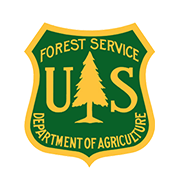Single Publication
Could not determine your location.
Jenkins Creek Fire 06-09-2025
Jenkins Creek Fire
Publication Type: News - 06/09/2025 - 10:00
National Incident Management Organization (NIMO) Team is managing the Jenkins Creek fire under a full suppression strategy. Ensuring public and firefighter safety remains a primary priority.
Divisions JJ, along the northwestern and western portion of the fire, and NN, along the eastern and northeastern portions of the fire will be combined into one Division today, JJNN.
The low pressure system that brought thunderstorms into the region yesterday continues moving through the area this morning and will continue to bring showers into the area around the fire. Northwesterly winds behind the low will bring smoke from the fires in Canada into our area late tomorrow morning.
Jenkins Creek Fire Quick Facts
Size: 16,145 acres Containment:94% Personnel: 201
Last night’s thunderstorms grounded the Unmanned Aerial System (UAS/drone) night flights so no new information regarding any new heat registers within the fire perimeter is available. The masticators continue to improve contingency lines along the 420 Road and to the west. Mulching operations north of Lake Cadotte along the Bundle Lake Road are increasing efficiency with crews clearing rocks and debris and identifying optimal vegetation removal routes ahead of the machinery. Additional masticators are expected to arrive the beginning of the week to assist with fuels reduction along the 425 Road and the Bundle Lake Road to the southeast. The Sherp, a specialized all-terrain vehicle (ATV) known for its ability to traverse watery and muddy terrain was successful in tying in the contingency lines between the Canadian Northern Railroad line and the 420J Road along the northwestern perimeter of the fire. Crews will continue to monitor and address any sources of heat as they patrol the perimeter of the fire. As new mapping data from the UAS and ground crews becomes available, acreage of the fire will be adjusted.
Fire Weather & Behavior: The low pressure system that brought thunderstorms into the region yesterday continues to slowly move through the area over the fire. Scattered showers and thunderstorms will continue Monday afternoon, with brief, moderate rainfall and gusty winds possible. Northwesterly winds behind the low will bring smoke from the fires in Canada into our area late tomorrow morning.
How Air Pressure Affects Fire Behavior: Air pressure significantly impacts fire behavior, affecting its intensity, spread, and overall dynamics. Fires can also alter air pressure within and around them, creating greater differences in pressure that influence the movement of smoke and heat. Lower air pressure generally reduces flammability, requiring more oxygen to support combustion. Higher air pressure can lead to faster burning rates, as there's a greater concentration of oxygen molecules for fuel to react with. Air pressure influences how quickly a fire spreads. Lower pressure can slow down the spread, while higher pressure can accelerate it. The difference in pressure between the hot, expanding air within the fire and the cooler, less dense air outside creates a pressure gradient that influences the movement of heat and smoke.

 InciWeb
InciWeb